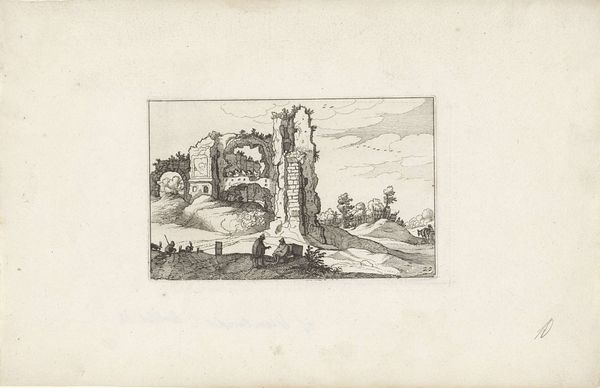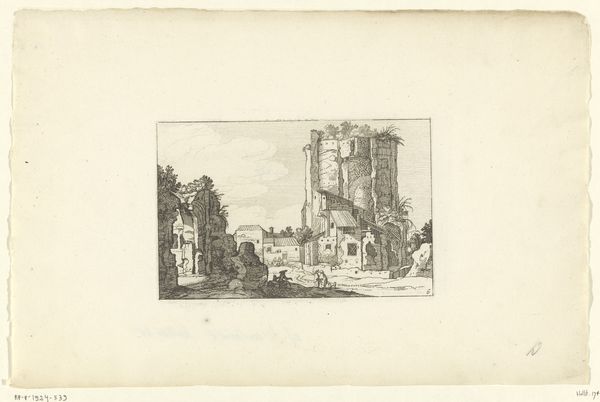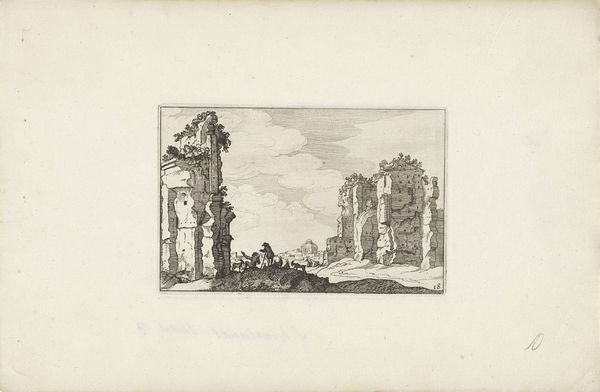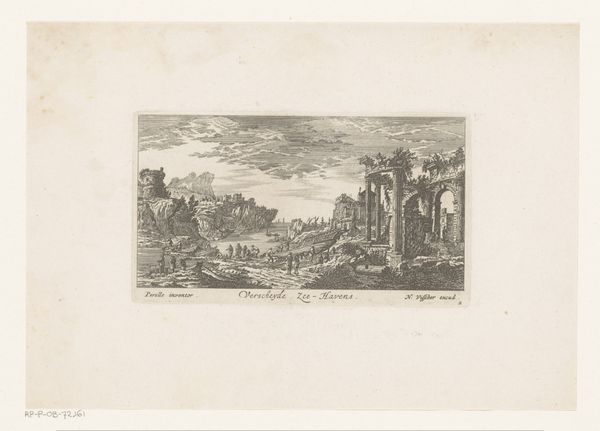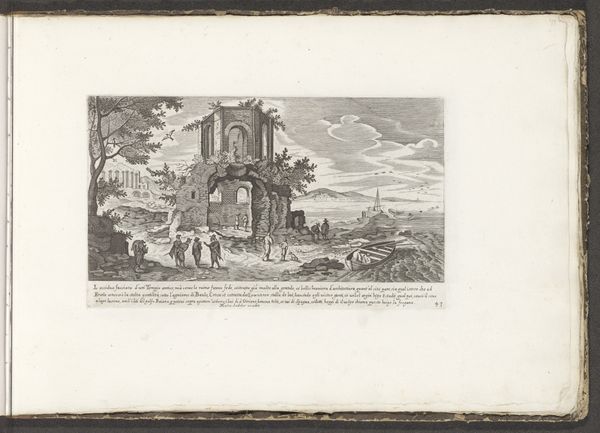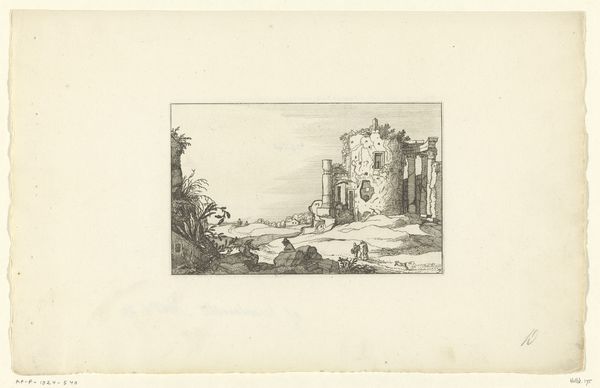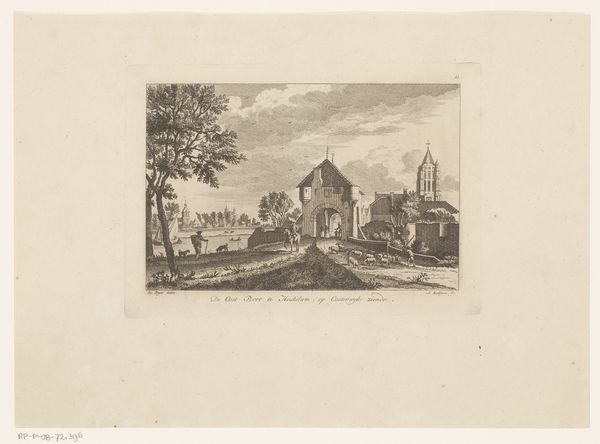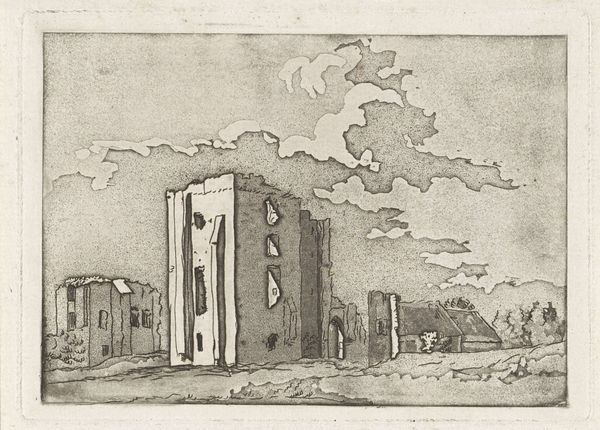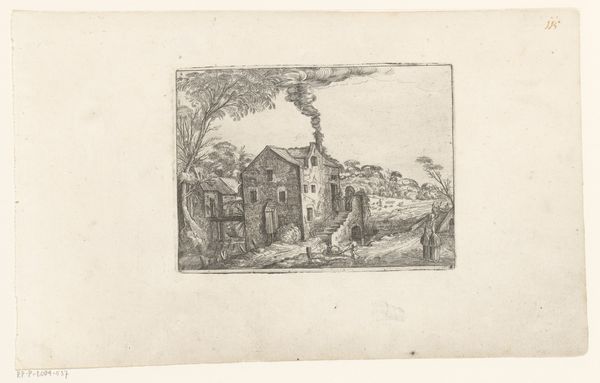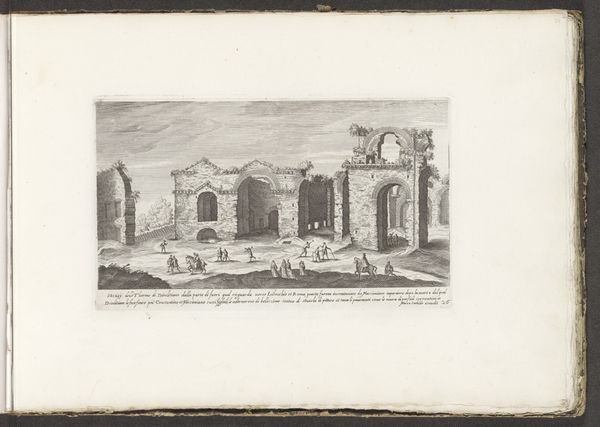
print, engraving, architecture
#
baroque
#
dutch-golden-age
# print
#
landscape
#
engraving
#
architecture
Dimensions: height 90 mm, width 122 mm
Copyright: Rijks Museum: Open Domain
Editor: This is *Dorpsgezicht met toren en kerk* by Jacob van der Heyden, a print made sometime between 1583 and 1645. It's a lovely engraving, a simple village scene. The crumbling tower feels very stoic, but I wonder what this image really signifies. What do you see in this piece? Curator: I see a powerful visual statement about the societal shifts during the Dutch Golden Age. The prominent tower and church, rendered with such detail, speak to the established order. But notice how they are also depicted with signs of decay and ruin. Editor: So, the decaying architecture is symbolic? Curator: Exactly. It can be interpreted as a critique of the religious and political institutions that dominated society prior to the rise of the Dutch Republic. The landscape, though pastoral, highlights a transition. What's replacing that fading structure? Editor: Perhaps… a new social order, driven by commerce and individual freedoms, emerging from those ruins. Curator: Precisely. Consider also how prints, as a medium, democratized art, making it accessible beyond the elite circles who had historically controlled visual narratives. It reflects who controls not just images, but interpretations of cultural and political power. Editor: That makes the artwork's symbolism and messaging feel more pertinent, by tying the printmaking process into the social movements it represents. It is quite intriguing to analyze beyond its aesthetics. Curator: And hopefully provides a framework to investigate and advocate for change within systems today. Editor: Definitely food for thought. Thanks for broadening my perspective.
Comments
No comments
Be the first to comment and join the conversation on the ultimate creative platform.
